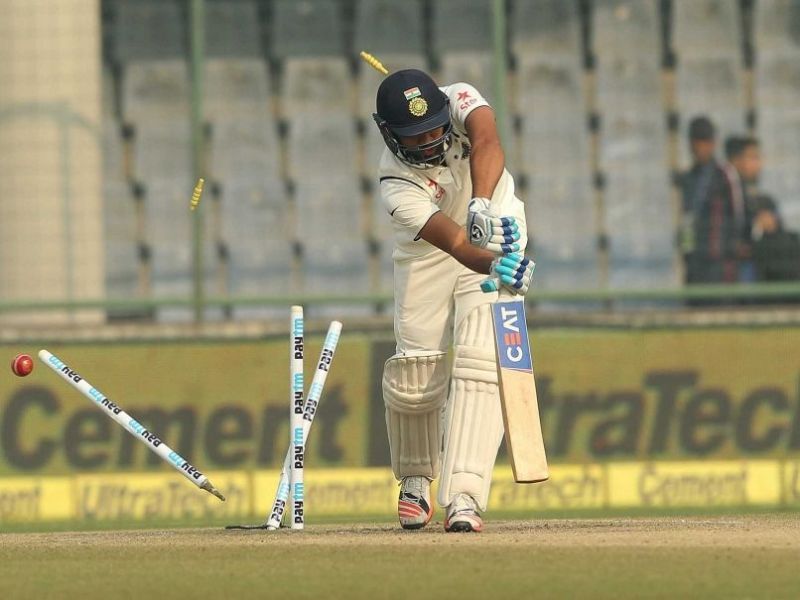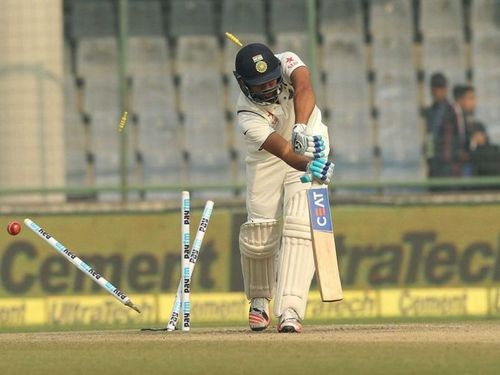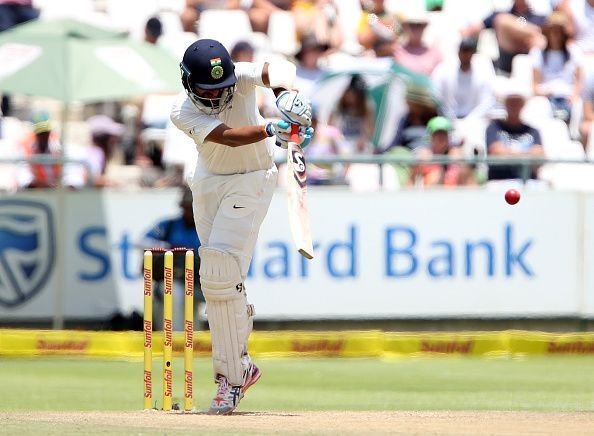
Home wins and away losses trap cricket in a vicious cycle

“How many times did South Africa come into the game in India or come close to winning games in India?”
Pestered into admitting that the Indian Cricket Team fulfilled the “lions at home and lambs abroad” adage, Virat Kohli shut a South African journalist down with an unabashed view that sent the cricket circuit seething. The team had just lost the second Test match and the three match Test series against South Africa and hushed talks about India’s disparity in performances in their home and away games refused to die down.
Yes, the pain hurt. Kohli did admit that from the very beginning. Neither was he shy in reflecting upon the lack of technique that had been exhibited by his batsmen and coach Ravi Shastri did admit that the lack of practice matches hurt the team’s chances.
But when he was pushed into a corner and when the journalist refused to give up without a controversial answer, Kohli sought refuge in past performances and brought up the Protean side’s lack of competitive skills in India, the last time they had toured the nation in 2015.
“That’s because of the pitches.”
The snap reply not only infuriated Kohli but also sent the cricket fanatics into a whirlwind of heated discussions. It was true that the Indian team had hardly tasted much success in nations like England, South Africa and Australia in the last decade but then which nation had been able to stamp their authority in overseas conditions with absolute dominance? Since 2010, the Australian team have won 16 out of the 42 games that have been played away from home.
England have a win percentage of 28.2 in the last eight years while touring and New Zealand fare the worst, with just 8 wins in 33 matches abroad. Further squaring it down to the sub-continent, England has won just 5 games in 14 matches, with 2 in India, and Australia 3 in 18, of which just 1 game was won in India. South Africa won a game way back in 2010 in India and New Zealand are yet to open their account this decade.
Is this dismal trend only because of the pitches on offer, as the journalist pointed out to Kohli? Why are these staggering numbers rarely mentioned when the Indian team is mercilessly attacked for their inability to win matches away from their home conditions? The home wins are fine, but they hardly hold importance.
The “real” test of skill is always when they tour overseas. If they fail, they are attacked ruthlessly but, why doesn’t a similar trail of attacks begin when a country fails to win in India?
The lack of skills and temperament on offer
The quick and easy route to fame and money is always a good performance in the T20 leagues all over the world. Youngsters assembled across the television sets attentively notice the wide array of shots that are smacked all over the park, standing deep in the crease. With hardly any movement in the pitches, that has been flattened out to accelerate the quick flow of runs and easy shots, the technique and the footwork required to score the sixes are hardly any.
An IPL performance gains an entry into the ODI unit which then fast forwards the initiation into 5-day cricket.
And so, we witness the white flannel majorly being adorned by cricketers who can hardly differentiate shots that should be played on the front foot or on the back foot and can hardly decide which ball to defend and which to attack. Such is the dismal affair that Kohli, while batting with Rohit Sharma in the series, would have to shout out from the non-striker’s end to inform his partner about which side of the ball had shine on and which did not, as the bowler was getting ready for his delivery!
Gone are the days when Brian Lara, Matthew Hayden, Kevin Pietersen and Younis Khan excelled in their ability to sweep the spinners to get under their skin. What we see currently are a crop of cricketers who can hardly stay at their crease if the ball offers an iota of spin. Forget the players who have been bred in the seam and swinging conditions Down Under or in England, even the Indian players cease to fully get under the grasp of the googlies, a major reason why spinners like Monty Panesar, Graeme Swann, Nathan Lyon, Moeen Ali and Ish Sodhi have tasted success against a team that was supposedly meant to be the best players of spin.
On the other hand, when the Indian team tours abroad, the footwork on display is shocking and the problems against the short ball, embarrassing. Save for Kohli, who too has his flaws around the fourth stump, a majority of the Indian batsmen are outdone by poor defence and the genuine pace of the ball.
In the sub-continent, one has more time to leave the balls and get under the line of the ball, but when it is being sent steaming down at 140kmph consistently, more than the skills, it is the temperament that matters.
The lack of “intent” and temperament to iron out flaws
Seated in the dressing room in Sydney, way back in 2003, Sachin Tendulkar observed that the nature of the dismissals in the Indian first innings was following a similar trend. In an attempt to go for a drive, most were succumbing, either to an edge behind or were being clean bowled through the gates. Tendulkar, a master of square and cover drives, did not attempt a single drive in his knock of 241 and what we witnessed was an innings stroked with not only great shots all around the park, but also one that was restrained, with a deep understanding and observation of the nuances of the match situation.
This not only displayed the pedigree and the temperament contained within a player, but also his intent to fight and his hunger to succeed. Rahul Dravid’s woes in South Africa are well documented, but one look at the number of balls that he faced will convey how the Karnataka player was eager to script a different tale.

1658 balls faced in 11 matches, and an average of 150.72 balls per match, reflects that he was not outplayed and almost never was he caught bamboozled as soon as he walked in to the crease. In contrast, India’s most reliable batsman currently Cheteshwar Pujara, has faced an average of 38.25 balls per innings in the two Test matches in the series and all of Kohli’s talks to see sparks of “intent” amongst his players have fallen on deaf ears.
Yes, the exit of legends has been a major reason in the dwindling status of Test cricket and the results have seemed to reflect just that. However, what scorelines do not portray is the fighting spirit that the young set of players staged, before nerves got the better of them.
In the first two matches of the Ashes, England were in with a chance on more than one session, but the inability to grasp onto them led to their eventual defeat. Even India had South Africa on the mat at intervals in the series, but their abject surrender made the task easier for the home team.
In order to settle down these nerves and provide adequate match practice to its national players, cricket Boards should encourage county stints and grant NOC certificates to play in different conditions all around the globe.
The structure of the Ranji Trophy in 2016/17 was revamped under the guidance of Sourav Ganguly, who advocated for the teams to play on neutral venues instead, to make the league more competitive and to enable the players to fine-tune their skills in varied conditions. This move was scrapped this year.
Talks of allowing the ICC to doctor pitches, which will negate the home advantage, seems to make no sense, as this will only be a means by which the chief board is trying to help technically-adept players by providing easier pitches to play on.
The crux of having tough overseas tours is to challenge a cricketer, so he can develop his game to suit testing conditions and not to see him score runs on modified conditions, which makes run-scoring easy. The main charm of setting foot on the hallowed Lord’s is not only the history that is involved, but also the swinging delivery that is sent down on a green-top under overcast conditions. Alter that, and Test cricket will really never be the same again.
However, till stern steps are taken to tackle the deficiencies in the grass-root level, we will be thrown into the viscous circle where home teams enjoin comprehensive wins and away teams struggle, going down meekly and tamely.